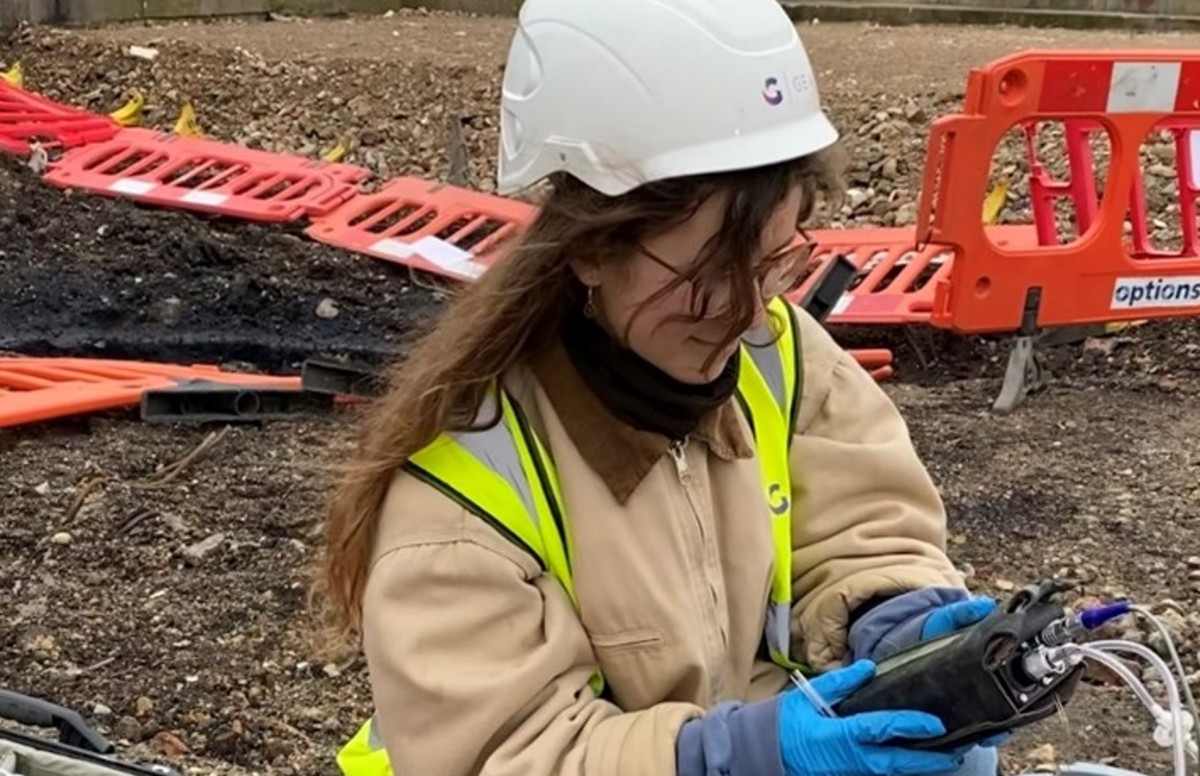What Does Geotheta Mean?
What Does Geotheta Mean?
Blog Article
Geotheta Can Be Fun For Anyone
Table of ContentsThe Ultimate Guide To Geotheta9 Simple Techniques For GeothetaGeotheta for BeginnersGeotheta Things To Know Before You Get This
They work together with civil engineers, structural designers, designers, and other professionals to integrate geotechnical factors to consider right into the general job design and building process. This requires reliable team effort, sychronisation, and communication to ensure that the geotechnical facets line up with the project purposes and fulfill regulative demands.Mining & Products Engineering: Concepts of drilling, infiltration rates, and aspects affecting the choice of exploration method. Blowing up techniques in surface area and underground operations. Mechanical and continuous strategies to fragmentation, including longwall shearing and fullface boring.
Modelling of piece and particle dimension circulations; comminution as a transfer feature. Comminution innovation: squashing, grinding, size category. Integrated analysis of fragmentation and comminution operations. Used by: Mining & Materials Engineering.
The 8-Second Trick For Geotheta
Bachelor's degree programs in civil, geotechnical, geological, and environmental engineering typically last four years and include general education and learning courses in English, social science, and the liberal arts, as well as training courses in advanced mathematics, structural geology, and fluid mineralogy. (https://gravatar.com/exactlypainterdeb7b76e1a)
Geotechnical engineering entails the assessment of the soil and rock conditions at a certain site, and their ramifications for the growth of that website. As many frameworks count on the ground for support, it lacks shock that a comprehensive understanding of the ground problems, and the viability of structure systems, are vital to the long-lasting stability and performance of the building or framework.
Being experts in the examination of geological formations and ground behaviour, geotechnical engineers carry out clinical examinations and screening to recognize the impact these geological developments may have on the design and building of building, civil and facilities tasks. This knowledge is critical for the layout and construction of buildings, roads, tunnels, dams, bridges, and water system and sewer systems.
The geotechnical group at Douglas Partners regularly speak with designers, design engineers, developers, and home builders to make suggestions on style and advancement proposals to ensure that the built frameworks are accordingly made for the ground problems. For instance, the style of footing systems needs to consider the weight of the framework, the capacity of the ground to support that weight together with activity resistances and effective construction.
The Greatest Guide To Geotheta
This job is considerably streamlined by the usage of our Douglas Map geospatial system that makes this info readily obtainable in a simple to make use of web browser user interface. A geotechnical engineer will certainly guide the drilling of boreholes and test pits to accumulate dirt and other examples, and likewise examine surface area features and ground exposures to create a geotechnical version of the subsurface conditions.
Depending upon the job type and ground conditions experienced, research laboratory screening may to name a few points analyze toughness, compressibility, reactivity and/or leaks in the structure of dirt and rock samples. After this data is gathered and collected, the outcomes are made use of for a geotechnical version of the site, which is commonly offered as sections throughout the site.

A geotechnical examination naturally can just analyze the ground conditions at the locations drilled or excavated. Natural variants in dirt and rock conditions can take place across a website and between examination areas. It is for that reason excellent practice that the geotechnical designer be preserved throughout building and construction of the project to offer on-site verification that the ground conditions experienced are constant with the expectations and guidance offered in the geotechnical examination report.
Facts About Geotheta Revealed
Geotechnical designers use their thorough knowledge of dirt and rock to evaluate danger and fix issues on varied infrastructure projectsGeotechnical engineering is a specialist branch of civil design which takes a look at the practices of earth materials and the application of soil and rock technicians. Consulting Engineers. As a geotechnical designer, you will assess the physical, mechanical and chemical homes of soil and rock in order to make foundations, keeping frameworks and earthworks
Geotechnical engineering is very closely connected to and overlaps with, both engineering geology and ground design - https://geotheta.blog.ss-blog.jp/2024-08-02?1722614750. It's possible to be experts in geotechnics or benefit a geotechnical firm yet be called a design geologist or a ground designer. As a geotechnical engineer, you'll need to: construct and preserve relationships with customers and other professionals associated with the website, throughout each projectmaintain security standards on website bear in mind price ramifications when you make recommendationsstudy geological maps and aerial pictures from a series of sources and from article various time periodsexamine building intends to see exactly how feasible they are based upon your understanding of the siteinvestigate dangers or geological hazards for the sitesearch for eco sensitive attributes, such as landfill beginning to establish valid and interpretive ground modelsplan area investigationsdrill and analyse examples of bedrock, soil, groundwater and extra products oversee various other experts on sitesolve technological problems as they emerge, such as unforeseen frameworks at drill sitesmonitor conditions throughout and after building and construction to make certain structures are steady in the brief and long termadding information collected on site to your first researchcreating geotechnical computations, drawings, and two or three-dimensional computer system versions translating the datamaking referrals regarding the proposed use of the website

Report this page